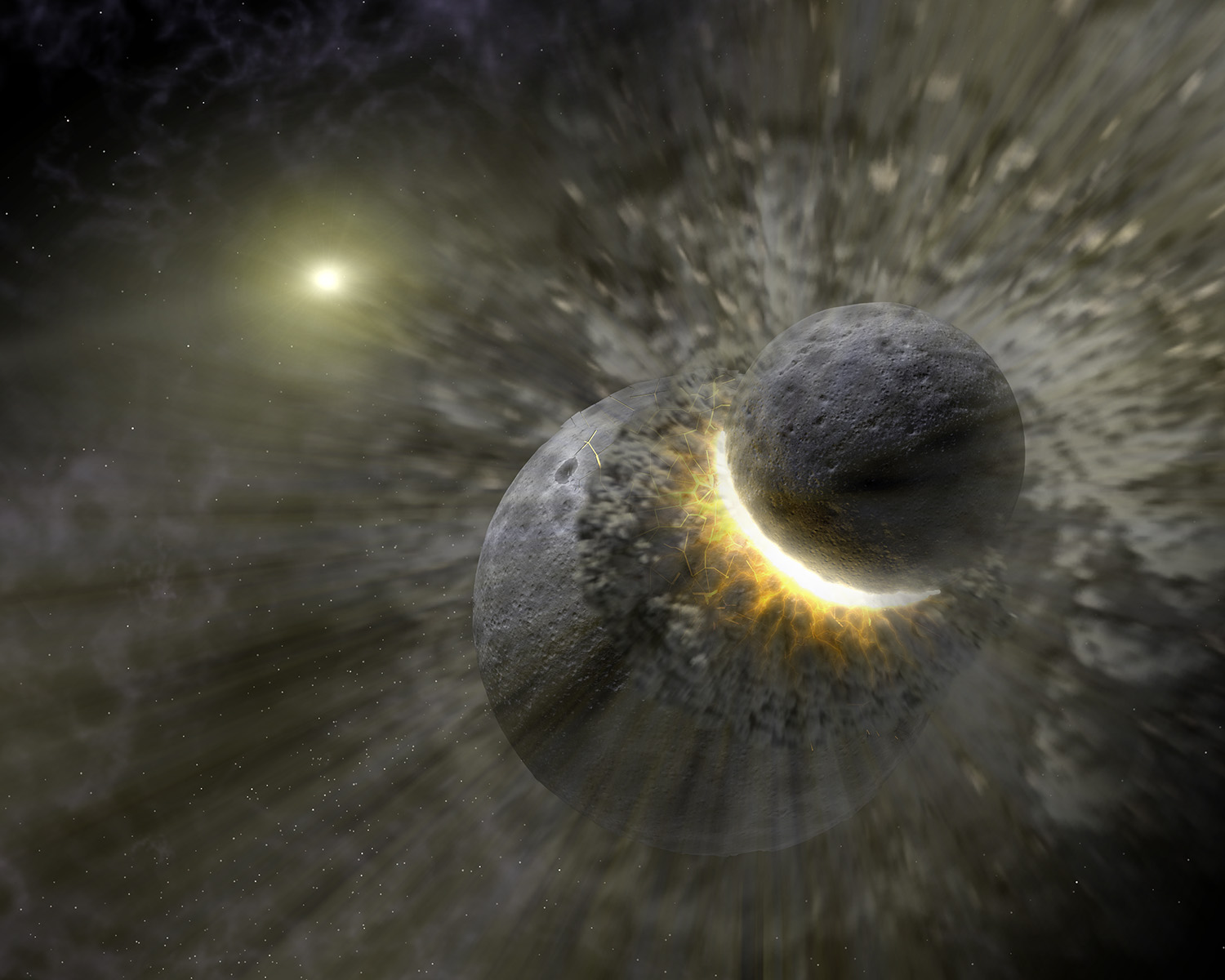University of California, Santa Cruz | 2019 Oct 30
A giant-impacts phase in the evolution of planetary systems can explain the observations of close-in giant planets with eccentric orbits
As planetary systems evolve, gravitational interactions between planets can fling some of them into eccentric elliptical orbits around the host star, or even out of the system altogether. Smaller planets should be more susceptible to this gravitational scattering, yet many gas giant exoplanets have been observed with eccentric orbits very different from the roughly circular orbits of the planets in our own solar system.
Surprisingly, the planets with the highest masses tend to be those with the highest eccentricities, even though the inertia of a larger mass should make it harder to budge from its initial orbit. This counter-intuitive observation prompted astronomers at UC Santa Cruz to explore the evolution of planetary systems using computer simulations. Their results ... suggest a crucial role for a giant-impacts phase in the evolution of high-mass planetary systems, leading to collisional growth of multiple giant planets with close-in orbits. ...
Frelikh performed hundreds of simulations of planetary systems, starting each one with 10 planets in circular orbits and varying the initial total mass of the system and the masses of individual planets. As the systems evolved for 20 million simulated years, dynamical instabilities led to collisions and mergers to form larger planets as well as gravitational interactions that ejected some planets and scattered others into eccentric orbits.
Analyzing the results of these simulations collectively, the researchers found that the planetary systems with the most initial total mass produced the biggest planets and the planets with the highest eccentricities. ...
Signatures of a Planet–Planet Impacts Phase in Exoplanetary Systems Hosting Giant Planets ~ Renata Frelikh et al
- Astrophysical Journal Letters 884(2):L47 (2019 Oct 20) DOI: 10.3847/2041-8213/ab4a7b
- arXiv.org > astro-ph > arXiv:1906.03266 > 07 Jun 2019 (v1), 08 Oct 2019 (v2)
